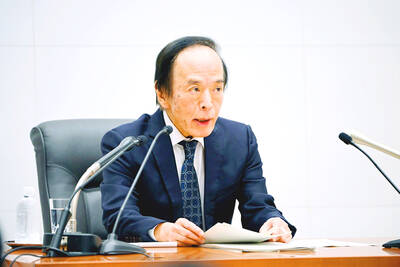Win Semiconductors Corp (Win Semi, 穩懋半導體), the world’s largest compound semiconductor foundry, yesterday said it plans to expand its capacity next year by 14 percent year-on-year, as its factory utilization rate has reached 100 percent due to improved customer demand.
The company plans to add 5,000 wafers to boost its monthly capacity to 41,000 wafers in the second quarter next year, Win Semi president Kyle Chen (陳國樺) told reporters on the sidelines of a SEMICON Taiwan news conference in Taipei.
“We are seeing strong customer orders,” Chen said. “Fourth-quarter performance looks quite good. [Revenue] decline should be milder this year, compared with the levels seen in previous fourth quarters.”
The company usually sees its revenue drop by 10 to 20 percent in the fourth quarter, he said.
Win Semi in July forecast that third-quarter revenue would grow 30 percent quarter-on-quarter to about NT$5.79 billion (US$186.76 million), compared with NT$4.45 billion in the second quarter.
The company is upbeat about growth momentum brought about by 5G technology, as every 5G smartphone is to be equipped with five, six or more power amplifiers, Chen said.
Analysts have forecast that 200 million of the 1.7 billion smartphones forecast to be shipped next year would be outfitted with 5G chips, Chen added.
Win Semi produces semiconductor used in power amplifiers, 3D sensing, WiFi and radio frequency products made from gallium arsenide and other compounds.
Chips made from gallium arsenide are more suitable for 5G applications than those made from silicon as it is superior in terms of higher saturated electron velocity and higher mobility, allowing transistors made from it to function at frequencies in excess of 250 gigahertz, Chen said.

Taiwan Semiconductor Manufacturing Co (TSMC, 台積電) last week recorded an increase in the number of shareholders to the highest in almost eight months, despite its share price falling 3.38 percent from the previous week, Taiwan Stock Exchange data released on Saturday showed. As of Friday, TSMC had 1.88 million shareholders, the most since the week of April 25 and an increase of 31,870 from the previous week, the data showed. The number of shareholders jumped despite a drop of NT$50 (US$1.59), or 3.38 percent, in TSMC’s share price from a week earlier to NT$1,430, as investors took profits from their earlier gains

In a high-security Shenzhen laboratory, Chinese scientists have built what Washington has spent years trying to prevent: a prototype of a machine capable of producing the cutting-edge semiconductor chips that power artificial intelligence (AI), smartphones and weapons central to Western military dominance, Reuters has learned. Completed early this year and undergoing testing, the prototype fills nearly an entire factory floor. It was built by a team of former engineers from Dutch semiconductor giant ASML who reverse-engineered the company’s extreme ultraviolet lithography (EUV) machines, according to two people with knowledge of the project. EUV machines sit at the heart of a technological Cold

TAIWAN VALUE CHAIN: Foxtron is to fully own Luxgen following the transaction and it plans to launch a new electric model, the Foxtron Bria, in Taiwan next year Yulon Motor Co (裕隆汽車) yesterday said that its board of directors approved the disposal of its electric vehicle (EV) unit, Luxgen Motor Co (納智捷汽車), to Foxtron Vehicle Technologies Co (鴻華先進) for NT$787.6 million (US$24.98 million). Foxtron, a half-half joint venture between Yulon affiliate Hua-Chuang Automobile Information Technical Center Co (華創車電) and Hon Hai Precision Industry Co (鴻海精密), expects to wrap up the deal in the first quarter of next year. Foxtron would fully own Luxgen following the transaction, including five car distributing companies, outlets and all employees. The deal is subject to the approval of the Fair Trade Commission, Foxtron said. “Foxtron will be

INFLATION CONSIDERATION: The BOJ governor said that it would ‘keep making appropriate decisions’ and would adjust depending on the economy and prices The Bank of Japan (BOJ) yesterday raised its benchmark interest rate to the highest in 30 years and said more increases are in the pipeline if conditions allow, in a sign of growing conviction that it can attain the stable inflation target it has pursued for more than a decade. Bank of Japan Governor Kazuo Ueda’s policy board increased the rate by 0.2 percentage points to 0.75 percent, in a unanimous decision, the bank said in a statement. The central bank cited the rising likelihood of its economic outlook being realized. The rate change was expected by all 50 economists surveyed by Bloomberg. The